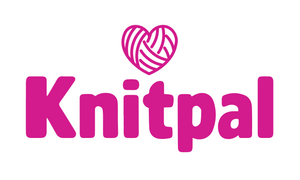
How to read knitting patterns and knitting abbreviations
When you’re just beginning to knit, all the knitting abbreviations may look difficult to understand, but, as you’ll see, it’s easy to learn the abbreviations and how to read knitting patterns.

If you’ve ever looked at a written knitting pattern, you would have noticed that the pattern consists of a list of numbers, abbreviations and other signs. These abbreviations are used in place of writing out the names of the stitches and directions in full every time. Just imagine how long the patterns would have been then!
However, when you’re just starting out, there’s only really a handful of knitting abbreviations you need to know. Also, to make things easier, we’ve made a downloadable PDF of knitting abbreviations that you can download and use while you’re busy with your favorite new craft!
Beginner abbreviations and stitches:
● k – knit (stitch)
● p – purl (stitch)
● CO – cast on
● BO – bind off
● inc – increase
● dec – decrease
● rep — repeat
● RS – right side (usually the front of the work)
● WS – wrong side (usually the back of the work)
Once you’re comfortable with these beginner knitting abbreviations, you’ll probably also move on to more difficult knitting patterns. Those which are just a bit more difficult than beginner knitting patterns are usually called “beginner plus”, while those which require you to have learned more knitting skills, like knitting stitches together, making yarn overs and different stitch increases, are called “intermediate”. If you do lace patterns in the knitting, the patterns will become more difficult that those which you would have come across in the beginner plus patterns.
But, don’t worry, most of the knitting abbreviations used in beginner plus and intermediate patterns either build on the abbreviations you’ve already learned, or are quite easy to figure out now that you’ve seen how the abbreviations work.
Common Beginner Plus and Intermediate abbreviations and stitches:
● tog — together
● k2tog — knit 2 stitches together
● k3tog — knit 3 stitches together
● p2tog — purl 2 stitches together
● m — marker
● pm — place marker
● sm — slip marker
How to read a knitting pattern
Before knitting a pattern, first check what the skill level is and do a quick read-through of the directions to make sure that you’re using the correct size needles, the correct weight of yarn, and that you understand how the pattern will progress once you’ve started. Now it’s all a matter of starting where the pattern tells you how many stitches to cast on for row 1 and work until you reach the end!
The pattern may either say “cast on” or simply “CO” and then a number of stitches. This is the number of stitches you need to start within your first row. You can then start to knit your first row.
As an example, we’ll explain how to knit stockinette and moss stitch from a written pattern. The same methods are then used to read all the other patterns!
Stockinette/Stocking Stitch Example
Stockinette stitch is an easy pattern where every right side (RS) row is knit and every wrong side (WS) row is purled. The pattern may look like this:
Cast on any number of stitches.
Row 1 (RS): K
Row 2 (WS): P
Rep row 1 - 2 to form a pattern.
This means that you will knit all the stitches for the first row, and purl all the stitches for the second row. Every other odd-numbered row will then be knit and every even-numbered row purled to form the stitch pattern.
Moss Stitch Example
Moss stitch is another easy pattern that looks beautiful once worked — and uses only a simple switch between knit and purl stitches! The pattern looks like this:
Cast on an odd number of stitches.
Row 1 (RS): *K1, p1, rep from * to last st, k1.
Row 2 (WS): *P1, k1, rep from * to last st, p1.
Row 3: As row 2.
Row 4: As row 1.
Rep rows 1 - 4 to form a pattern.
This means that, in row 1, you will repeatedly work knit 1 stitch, purl 1 stitch until you have just one stitch left. That last stitch you will also knit. In row 2 you will work repeatedly purl 1 stitch, knit 1 stitch and then purl the last stitch you have left. For row 3 you repeat row 2 and for row 4, you repeat row 1. That is your “pattern repeat”. Keep on working these four rows over and over to form the pattern.
Remember to download the PDF containing all the knitting abbreviations you need!
As you can see, reading knitting abbreviations and knitting patterns are a lot easier than you might think!

